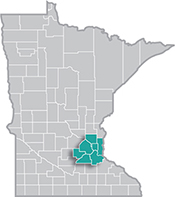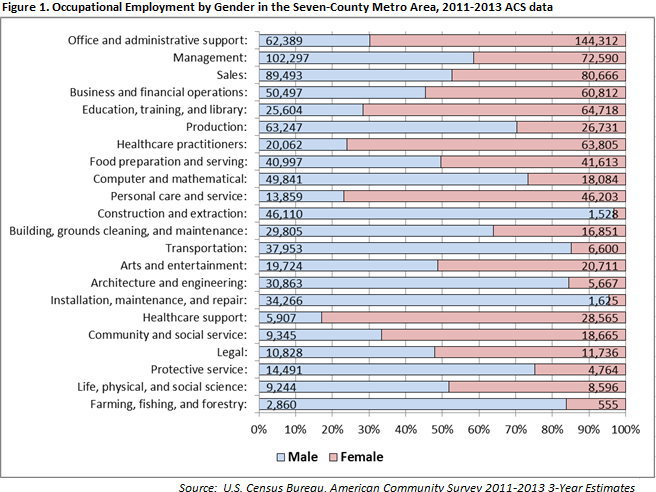 The Minneapolis-St. Paul metropolitan area is a national leader in finance, advanced manufacturing, agriculture and retailing.
The Minneapolis-St. Paul metropolitan area is a national leader in finance, advanced manufacturing, agriculture and retailing.
Medical devices, electronics and processed foods are strong suits recognized globally.
Want the freshest data delivered by email? Subscribe to our regional newsletters.
3/10/2015 2:23:55 PM
Tim O'Neill
In our article The Balance of the Sexes we learned that gender distributions within certain industry sectors of the labor market are not so balanced. Women, for example, hold more than three-fourths of jobs within health care and social assistance while men hold more than five in six construction jobs.
The Census Bureau’s American Community Survey (ACS) sheds even more light on gender balances within specific occupations. The ACS is an ongoing survey that provides annual population and labor force statistics across a wide range (including age, sex, race, income, educational attainment, veteran status, disabilities, commuting information, and more), which allows communities to use up-to-date information in planning investments and developing services.

Similar to gender distributions for the major industrial sectors, the 22 major occupational groups show large imbalances in gender distribution. The starkest imbalances are witnessed within construction and extraction and installation, maintenance, and repair, where men hold more than 95 percent of jobs.
Other occupational groups exhibiting a large percentage of male-held jobs include:
Other occupational groups dominated by women include:
The ACS allows us to analyze even beyond these 22 major occupational groups to specific occupational data. We can see, for example, that 91 percent of metal and plastic workers in the metro are male and 90 percent of the estimated 31,000 registered nurses in the metro are female.
Our next metro blog will use the ACS again, along with the Bureau of Labor Statistic’s Current Population Survey to analyze pay differences by gender. Nationally, more than 3.5 million households participate in the ACS each year, and results are broken down into one-year, three-year, and five-year estimates, depending on the size of specific communities.
You can download the ACS Information Guide for a detailed methodology breakdown and frequently answered questions.
Contact Tim O’Neill at 651-259-7401.